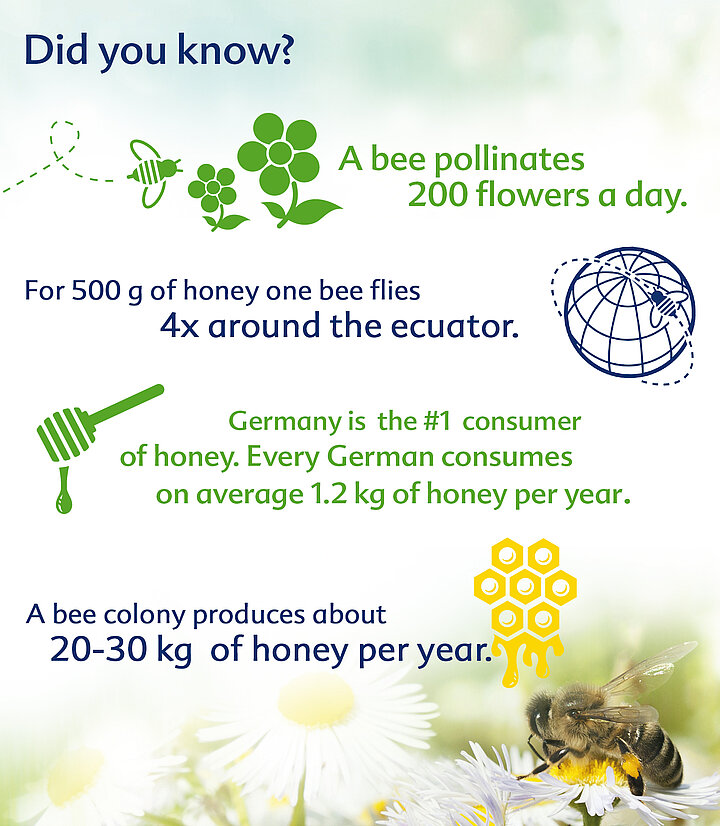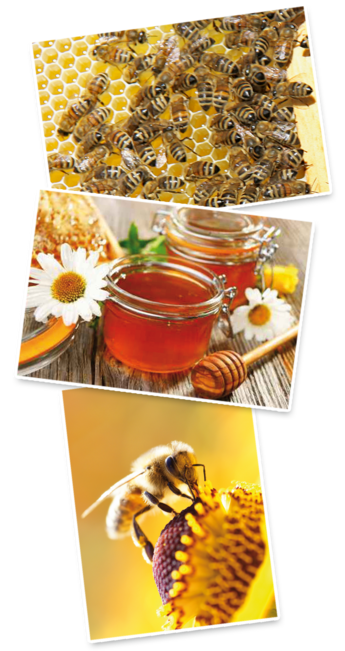
Why bees are important to us all.
The buzzing of the bees brings life to our gardens, their honey sweetens our life, their poison is used in medicine against inflammation, candles made out of bees wax bring light to dark evenings and propolis is good for our immune systems.
These tiny animals are invaluable to us humans. With their sheer hard work, they achieve amazing things and are one of the most important working animals worldwide. Their most important task is to pollinate plants. Without this free service from the bees, we would have to do without about a third of our foodstuffs.
The honeybee is an essential pillar of our ecosystem. More than 80% of native flowering plants depend on pollination. Without this cross-pollination, many plants would be unable to produce fruit and seeds. Our entire countryside, our diet, and the continuation of many plant and animal species would be threatened.
Bees are essential for the plant world. In turn, the bees also depend on the pollen and nectar from the plants as food.
It is a cycle of giving and taking. Just a few years ago, fields and meadows offered a rich choice of various flowering plants. Grain fields contained a mixture of poppy, cornflowers and many other wild flowers and herbs; meadows were colorful carpets of flowers. The industrialization of farming has destroyed much of this abundance.
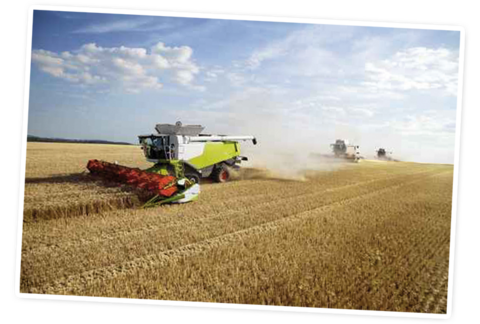
Organic herbs are missing from conventional grain fields and, these days, they are only green or yellow. Meadows have been transformed into intensive grazing areas. Bees are therefore often hungry and, without supplementary feeding by the beekeepers, would not be able to survive in some regions.
The use of sprays such as insecticides and herbicides also threatens the bees. The substances are absorbed by the bees, and these poison them or destroy their sense of orientation so the animals cannot find their way back to the beehive and they die.
The planting of genetically-modified plants also has an influence on the bees. The biological balance is threatened and the natural diversity increasingly limited. Bees cannot tell if a plant is genetically modified or not. The insects therefore spread their dangerous cargo and contaminate non-genetically modified areas with agro-genetic technology, just by carrying out their natural task in life.
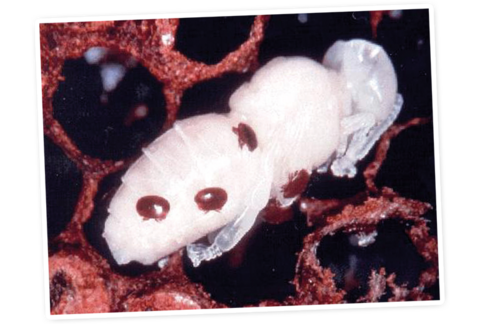
Further dangers are illnesses, parasites and viruses brought in through globalization. Our bees don’t recognize these and have no defense mechanism against them. One well-known example is the varroa mite from Asia. Without treatment against it by the beekeepers, all the bee colonies would be killed off.
The life of the bee. About 40,000 bees live in a beehive. In each colony there is only one queen bee. She is larger than the others and is easily recognizable by her long body and short wings. Her only job is to lay up to 2,000 eggs a day and thus ensure the continuation of the bee population. The queen only mates once in her life in the so-called nuptial flight in the air. This can take a few days, during which the queen mates with lots of drones, the male bees.
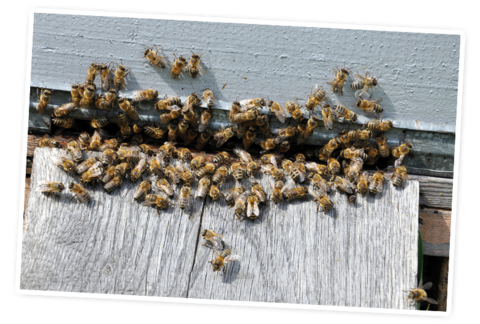
The largest part of the colony is made up of workers.
Their lifespan depends on how hard they have to work. Bees that have a lot to do in summer don’t live as long as others in winter. The workers take care of and feed the larvae and the queen. They build the beehive by producing wax for the honeycombs. They make honey out of the nectar. After about three weeks, the worker bees become flying bees. They fly out and collect nectar, pollen and water and bring everything back to the hive. In each hive, there are also many thousands of male bees – the drones. They don’t have a poisonous sting and are born from unfertilized eggs. Their function is to mate with the queen. As they cannot feed themselves, they are fed and cared for by the workers. They die directly after mating or, at the latest, in winter when there is not enough food and they are pushed out of the nest.
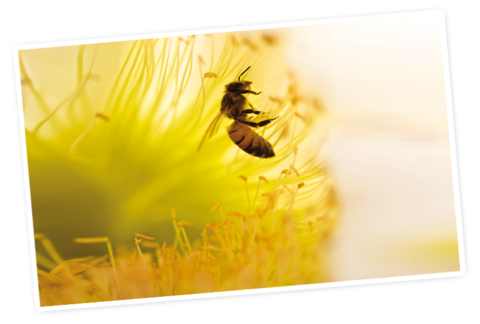
Bees, bumblebees, butterflies, etc. are irreplaceable. As flower pollinators, they ensure the existence of a variety of plants and animals. The link between the valuable cooperation of the pollinating insects and yield is clearly visible in fruit farming: without the pollination of the apple blossoms by the bees and other insects in spring, there would only be a few low-quality apples in autumn. Even with wild plants, there are many examples of such interdependent relationships. For bees, etc. to survive, they need enough space and food from early spring until late autumn. Gardeners have many possibilities to provide space and food in their gardens for visitors to the flowers.
This is how you can help bees:
- Buy organic products
- Buy regional honey
- Sponsor bees
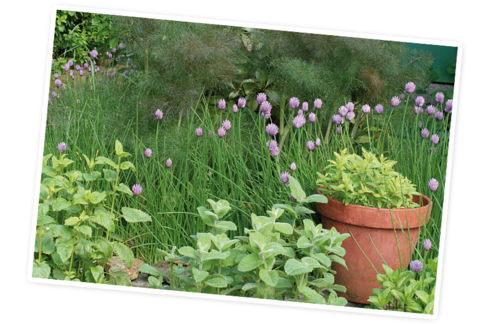
1. In a kitchen garden
Fresh herbs are not only tasty ingredients in our food, but insects love herbs too. Let them flower, and bees, bumblebees, etc. will be delighted by herbs such as sage, savory, basil, mint, lemon balm, dill, marjoram, thyme, lovage and chives. Vegetables such as onions, carrots and leeks are surprisingly beautiful when they are allowed to flower. Freshen up the edges of your veggie patch with marigold and borage.
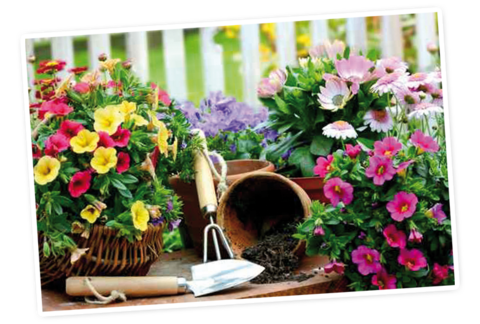
2. In a flower bed
Many bushes and annual or biennial summer flowers are nectar and pollen providers. For the insects it is important that the flowers are not “filled”. In spring, bulbous plants are especially suitable (e.g. snowdrops, crocus, scilla, daffodils). For bees, most of the composite plants are interesting (e.g. asters, sunflowers), unfilled dahlias, mallow, reseda. You can also attract insects with balcony or potted plants (e.g. reseda, clustered bellflower, marigold, morning glory). Instead of planting geraniums on the balcony which are of no value to insects, why not plant fan flowers!
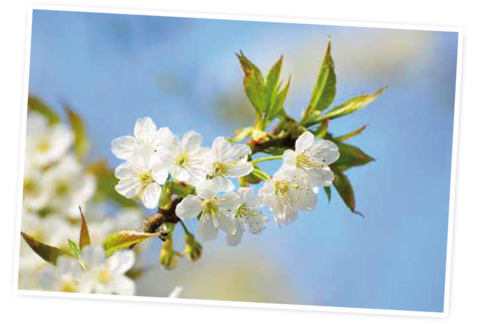
3. Trees and bushes in the garden
Flowering trees and bushes already offer food for insects in early spring. Native species provide flowers and fruits. The following are suitable: fruit trees, berry bushes, dogwood, serviceberry, privet, snowball bushes, willow, hazel, barberry and unfilled wild roses. Further information on the subject of “flowering landscapes in your garden or on your balcony” can be found at www.bluehende-landschaft.de



